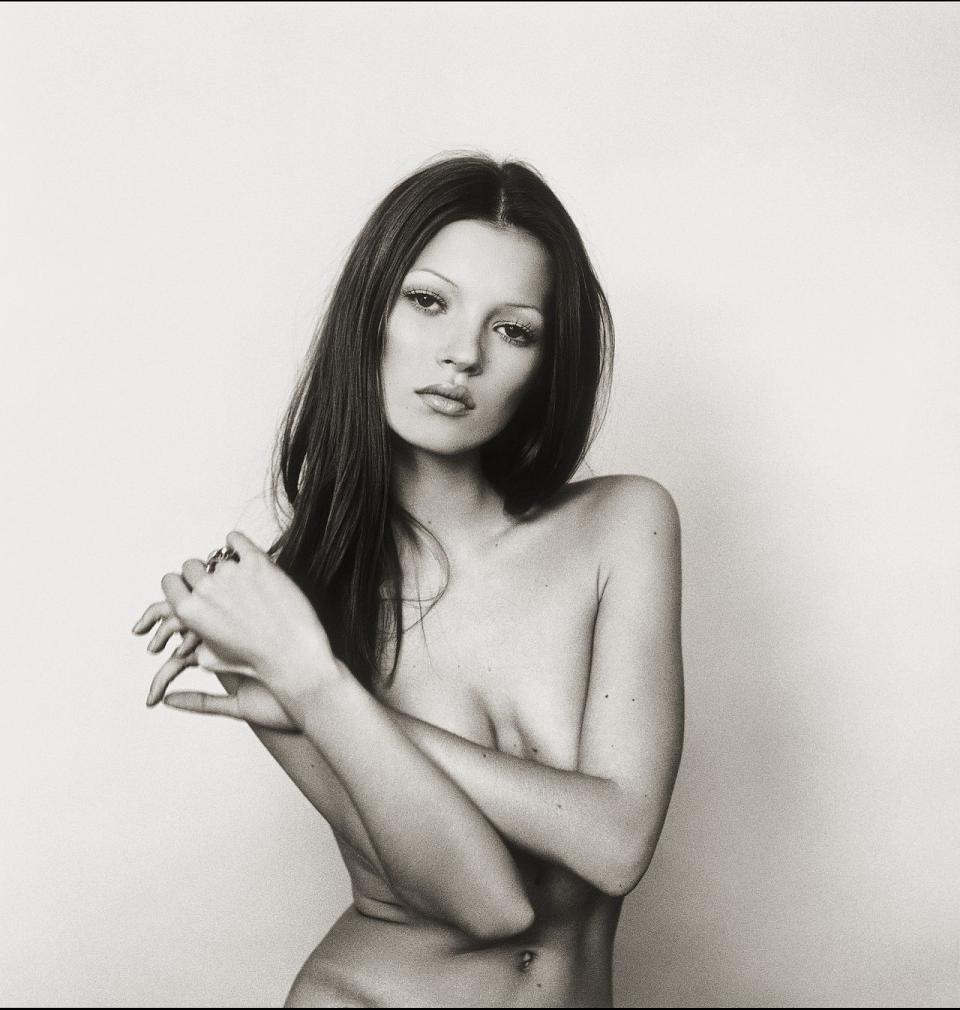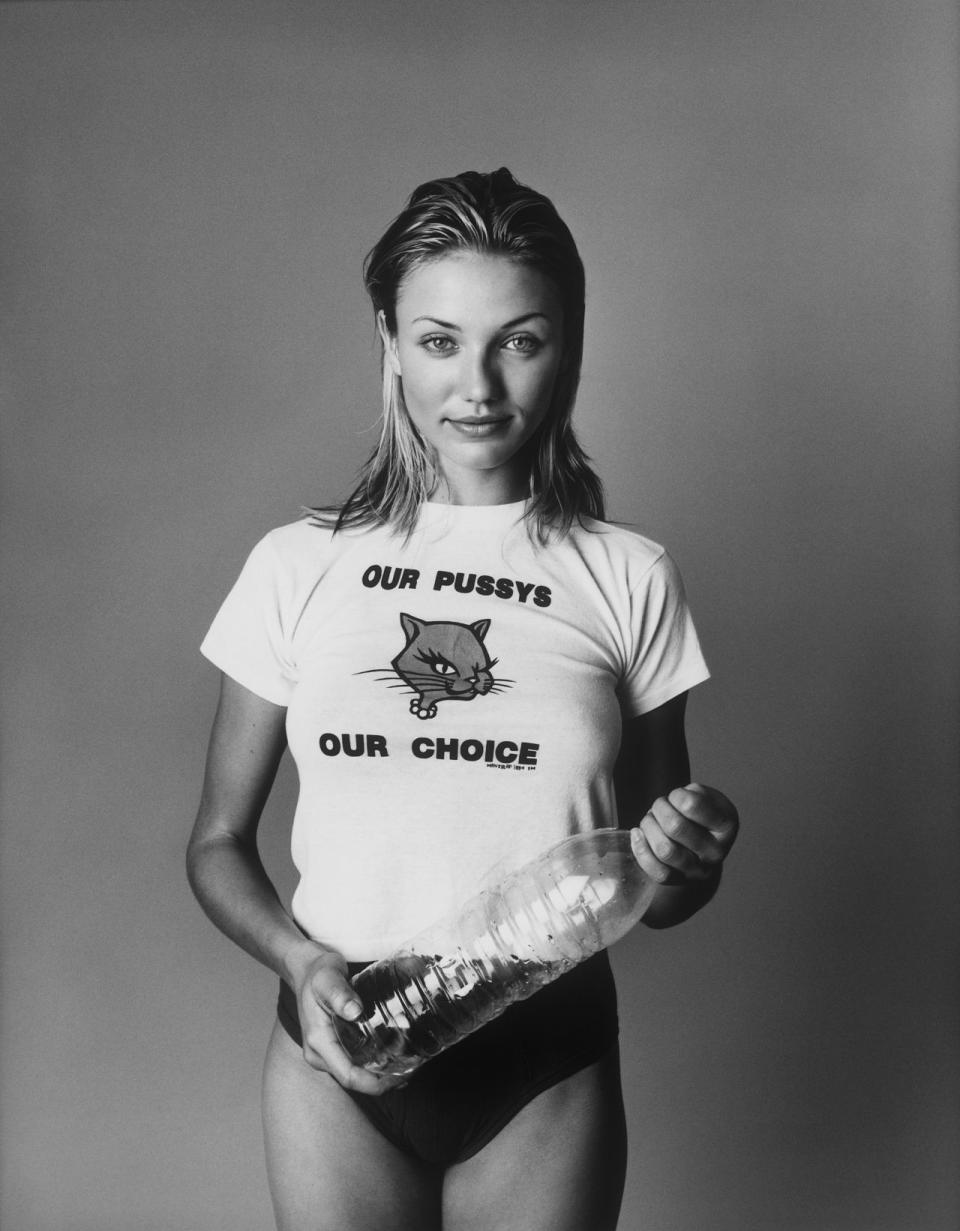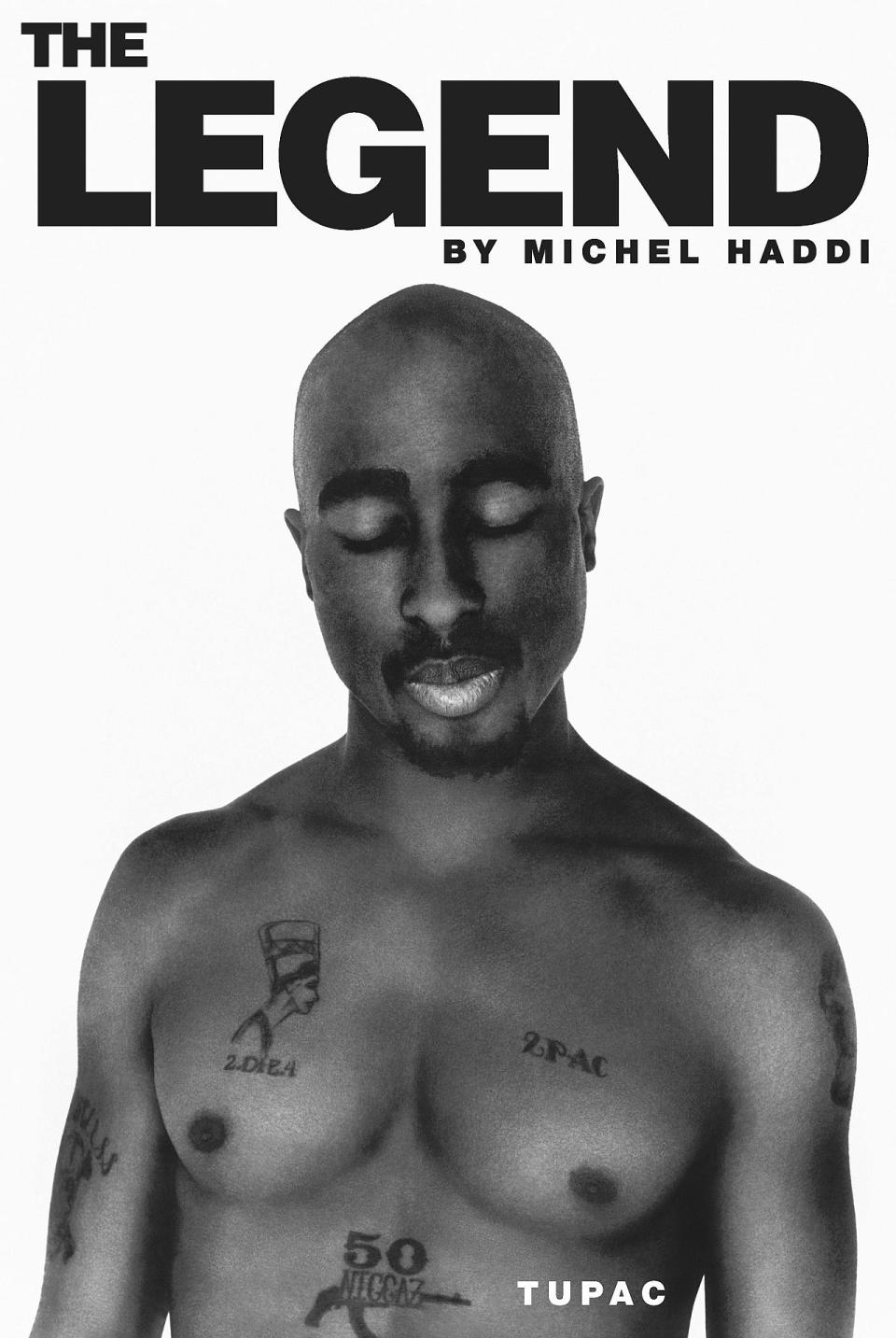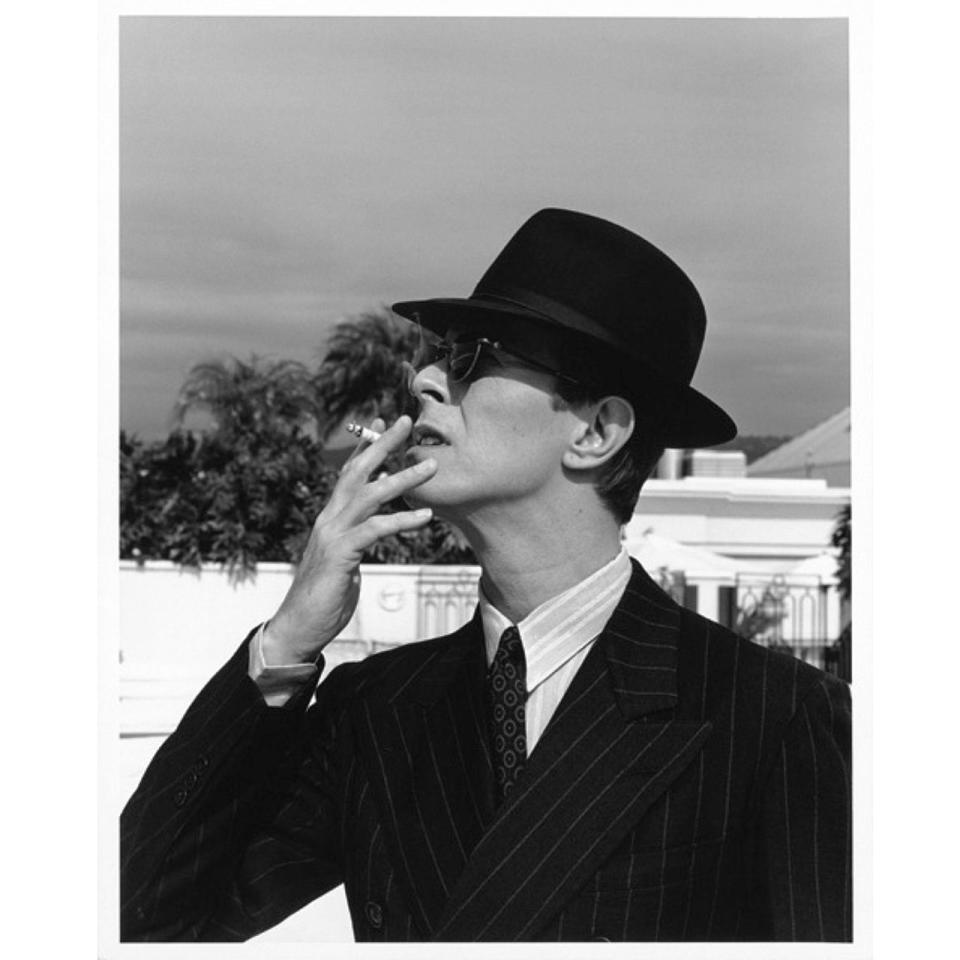"You see a dead man": Legendary photographer Michel Haddi recalls working with Tupac
Michel Haddi's photography career is nothing short of remarkable.
He has immortalised the faces of some of the most legendary figures of our time, including David Bowie, Aretha Franklin, Johnny Depp and Heath Ledger. His work has graced the pages of the most prestigious fashion magazines in the world, including Vogue and GQ.
Born in Paris to an Algerian Muslim mother and a French soldier he never knew, Haddi climbed to the top of his field, and has spent over 30 years capturing intimate moments and the essence of all those he photographed.
This month, the international photography fair, Photo London, is featuring a collection of his captivating work, presented by 29 Arts In Progress.
Among the highlights are some rare polaroids of Kate Moss that were recently discovered after being lost in storage in Venice Beach for 25 years.
The exhibition will also include unconventional colour works by Italian master of fashion photography Gian Paolo Barbieri, large format Polaroids of ethereal women by the eclectic Italian Artist Toni Meneguzzo, and rare Polaroids of iconic ‘90s supermodels by British photographer Rankin.
Euronews Culture caught up with Haddi ahead of Photo London, which runs from 11 to 14 May at Somerset House.
In this interview, we delve into some of the most exciting and memorable moments of his career, including his awe-inspiring first encounter with the late Tupac Shakur and the day he photographed the Red Hot Chilli Peppers breaking down the Berlin Wall. Haddi also shares his perspective on the intersection between martial arts and photography, as well as his insights on the potential impact of artificial intelligence on the art world.

Euronews Culture: Can you recall your first encounter with Kate Moss?
Michel Haddi: The first time I met Kate, I was working for Interview Magazine in Los Angeles, and I was working with Lolita Davidovich, who was at the time a very big actress. So I'm shooting Lolita, and here comes a girl with this kind of very London accent, and she's a friend of a British stylist I worked with all the time, Kim Bowen.
Kim introduced me to Kate and she was like a butterfly. While I was shooting Lolita, she asked me 'Do you mind if I go and sunbathe by the pool?'. And I said, 'Of course'.
I never ended up shooting Kate that day. But I few months later I'm back in New York and Bloomingdale's ask me to do a very big shoot. And they said, 'Well there is a new girl in town. She just did Calvin Klein and she's going to be a big star. Her name is Kate Moss.' And I burst out laughing and said, 'Of course it is'. She was absolutely fabulous and she's one of the best girl I've ever worked with.
You seem to place great value on the role of women in your life. Could you share more about what has led to your profound appreciation for women?
Well, I was raised by a single mother who worked as a chambermaid in top hotels her whole life. As she was a single Muslim woman who lived through the Algerian war and came to Paris in the 1960s, she never learned to read or write. But I saw her as a remarkably strong woman from a young age and it made me realise the power of women. As simple as that.
As a photographer, I find women to be extremely powerful and beautiful. This perspective was largely influenced by Helmut Newton, whose work features strong, fabulous women who exude dominance. When I capture photographs of women, I strive to depict them in a similar light - as powerful, dominant, and inherently beautiful beings.

Can you share with us your earliest memories of photography and what inspired you to pursue it as a career?
When I was young, my family moved to one of the worst suburbs in Paris, and I knew that if I didn't get out, I would probably end up as a real hardcore gangster, in jail or dead. But eventually, we were able to move to a better part of the city, which was very vibrant and alive with artists and photographers.
As a teenager, I worked in a very popular gay restaurant, where top models and icons like Grace Jones would come and go. It was around this time that a friend sold me a camera. I started experimenting with photography. I took pictures of a stunning girl from school who had beautiful green eyes and brunette hair. I got the photos developed at the best lab in town and I realised that I had a gift for it.
Is there anyone on your bucket list that you have yet to photograph?
Well there is a new generation. I love Rihanna. I find her extremely beautiful. And I love Timothée Chalamet. And I mean of course Taylor Swift, she's very interesting.

What was it like working with Tupac?
At the time, I was living in Venice Beach, California when The Source magazine approached me about photographing Tupac. And during that period, gangster rap was at its peak and there were quite a few killings. Tupac also certainly had a reputation. Anyways, he'd just finished filming John Singleton's Poetic Justice film with Janet Jackson - who I worked with later. When he arrived at the studio I was struck by his elegance and politeness. I told him instantly, 'My friend, you remind me a of a young Martin Luther King'.
But the terrible tragedy for me about these photos is that when you look at them you see right away a dead man. When I saw him, I saw Martin Luther King in him, and when I took his picture his eyes were closed. It was a premonition. But the guy had a fabulous soul. And it was clear he was a poet and a true artist.
In addition to your illustrious career as a photographer, you are also an accomplished martial artist, having dedicated yourself to the discipline since the age of 18. Given your experience in both mediums, can you speak to the ways in which your practices in photography and martial arts intersect and inform one another?
This is a very good question. You're the first person to ask me this.
Well, there is definitely an interlink between the two. I dedicate my life to my family, my wife, photography and martial arts. With martial arts you have to be dedicated to get better everyday. I am 67 soon but I still train four times a week at 9am in the gym. It's a must for me because my martial arts helps me tremendously with my photography. It allows me to be so open with photography in trying to find new concepts and new ideas. I like to take the energy from martial arts and bring it to my photography. I hope I'll be able to do both for a long long time.

AI technology has revolutionised the way we approach photography, but it has also sparked issues surrounding authenticity and creativity. What are your thoughts on the role of AI in photography, and how do you see it affecting the future of your craft?
Well in order to take words and generate them to images, first you need a base of images. So you have to steal millions of libraries. So already if you're stealing, you're going to have a problem, because you're going to have a lot of lawsuits. And this is already happening.
But I feel like the computer will never be like an actual human being. I'm able to talk to you, at the same time look out of the window and all of these things. The computer will not be able to do all of these things.
With all this technology emerging, art coming from the heart is going to be even more valuable now. For me AI is going to be terrific for all the work I'm doing on Photoshop. I'll be able to work faster and have new techniques to make my images better. But creating art itself, it's never going to match.
What is one of your most memorable shoots?
When I photographed the Red Hot Chilli Pepper during the fall of the Berlin Wall. I was at the right place at the right time. It was 9 November 1989.
I was in the studio working with the guys. And then this group of German people told us that, 'Today we are breaking the wall down'. So I looked at Anthony Kiedis, and the rest of the guys, and I said, 'Ok, we're going to take a cab and I'm going to photograph you breaking the wall.'
So we go there and there were police everywhere. And they start to break down the wall. They're amazing images. I couldn't believe what was happening in front of me.
How would you like to be remembered?
I would like to be remembered as a guy who dedicated his life to the art of photography, his family and martial arts. One of the greatest accomplishments of my life has been becoming a photographer of Arabic descent. I have lived in Paris, London, Milan, New York, and Los Angeles, and working for many talented individuals. With a name like Haddi, I feel like God gave me all the keys. Thank you so much. I can go in peace.
Michel Haddi’s work will be on display at the 29 Arts in Progress Gallery booth G27 during photo London 10-14 May Courtyard Pavilion - Somerset House London.

 Yahoo News
Yahoo News 
